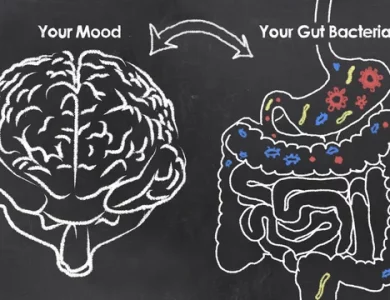Thinspo: Effects on Body, Mental and Physical Health

This trend, known as “Thinspo” – from the words “thin” and “inspiration” – has taken centre stage in discussions concerning body image, sparking concern among health professionals and psychologists alike.
Thinspo is content that promotes an extremely thin physique as the ideal standard of beauty and desirability. Such content includes images, quotes, and narratives that romanticize extreme thinness, and it has gained remarkable traction in the digital age. Anorexia has been largely fueled by the omnipresence of social media platforms, which facilitate the rapid dissemination of images and ideas.
some hashtags that have been associated with promoting Thinspo content on social media platforms include:
- #Thinspo
- #Thinspiration
- #ThinspoJourney
- #WeightLossJourney
- #BodyGoals
- #GetThin
- #Fitspo (this also refers to general fitness inspiration, but sometimes overlaps with Thinspo content)
- #SkinnyGoals
- #ProAna (short for “pro-anorexia”)
- #ProMia (short for “pro-bulimia”)
Table of Contents
What is considered Thinspo? (What is Thinspo used for?)

Thinspo, short for “thinspiration,” is a visual trend that glorifies and idealizes an extremely thin body as the ultimate standard of beauty and desirability. This trend involves the dissemination of images, quotes, and messages that promote the pursuit of extreme thinness, often to motivate individuals to achieve or maintain such a body shape. Thinspo is utilized as a source of inspiration for those who aspire to attain what is perceived as the “perfect” body, even if it means resorting to unhealthy and dangerous practices.
The Thinspo trend has its origins in the quest for aesthetic perfection, fueled by societal pressures and unrealistic beauty standards. It gained significant traction in the late 20th century and has since evolved to become a prominent presence in the digital age. Thinspo content is intended to motivate individuals to adhere to restrictive diets, and excessive exercise routines, and even engage in harmful habits such as disordered eating behaviours.
Thinspo’s evolution is closely tied to changes in media consumption habits. Initially, Thinspo was manifested through magazine clippings featuring pictures of thin models and celebrities, alongside aspirational quotes. These collages were often shared within select circles. However, with the advent of the internet and the explosion of social media platforms, Anorexia’s reach expanded exponentially.
Thinspo content operates under the deceptive guise of “inspiration.” Images of impossibly thin bodies are often accompanied by quotes that suggest dedication, discipline, and willpower. The message reinforces the notion that extreme thinness equates to success, self-control, and happiness. However, the reality behind anorexia is far from these idealized notions.
The messages disseminated through Thinspo content not only endorse harmful physical practices but also perpetuate a toxic cycle of body dissatisfaction and low self-esteem. This trend preys upon vulnerabilities, capitalizing on the desire for acceptance and validation while exacerbating the negative impact on mental and physical well-being.
Male Thinspo

The origins of Male Thinspo can be traced back to the growing cultural emphasis on muscularity and body definition among men. In an era marked by social media and an increasingly interconnected world, men are now exposed to images of chiselled bodies and “fit” physiques more than ever before. This exposure can lead to body dissatisfaction and a desire to emulate these idealized images, similar to the impact on women in traditional Thinspo trends.
Social media platforms, fitness forums, and online communities have become hotspots for the dissemination of Male Thinspo. Hashtags like #MaleThinspo and #LeanGoals are used to curate and share content that perpetuates the idea that achieving extreme thinness is not only desirable but also essential for social validation.
The effects of Male Thinspo on men’s body image and mental health are complex and concerning. Just as with traditional Thinspo, exposure to Male Thinspo content can lead to feelings of inadequacy, low self-esteem, and unhealthy behaviours. Men may feel pressure to engage in restrictive diets, overexercise, or even turn to harmful substances to achieve the coveted “ideal” physique.
Thinspo on Body Image
Thinspo operates as a relentless conveyor of unrealistic beauty ideals. The constant exposure to images of impossibly thin bodies, often accompanied by captions praising these physiques, fosters a pervasive sense of dissatisfaction among those who don’t conform to these standards. Individuals find themselves caught in a whirlwind of comparison, leading them to view their bodies as inadequate and undesirable.
The curated world of Thinspo often showcases a narrow range of body types, omitting diversity and embracing a one-size-fits-all perception of beauty. This limited representation reinforces the idea that thinness is synonymous with worthiness, inadvertently marginalizing anyone who doesn’t fit this predetermined mould.
The act of constantly comparing oneself to the idealized images and narratives propagated by Thinspo exacts a heavy psychological toll. This perpetual comparison fuels feelings of inadequacy, low self-esteem, and heightened anxiety. The gap between reality and the unreachable Thinspo ideal becomes a breeding ground for self-criticism and negative self-talk.
Moreover, the unrealistic nature of Thinspo’s portrayal of bodies cultivates a sense of perpetual dissatisfaction. Individuals may find themselves trapped in a cycle of chasing an ever-elusive goal, leading to a never-ending quest for physical perfection that is both mentally and emotionally draining.
Thinspo and Eating Disorders
The influence of Thinspo reaches its most devastating culmination through its association with triggering and perpetuating eating disorders. Anorexia nervosa, bulimia nervosa, and other related conditions find an alarming ally in the content that glorifies extreme thinness. In this exploration of Thinspo’s nexus with eating disorders, we unravel personal stories and delve into the perilous cycle of obsession, guilt, and shame that ensnares those who fall under its spell.
Behind the glossy facade of Thinspo content lies a dark and dangerous reality, with countless individuals succumbing to its harmful allure. Personal stories and testimonials from those who have been ensnared by Anorexia paint a poignant picture of the progression from harmless curiosity to full-fledged eating disorders.
Anorexia’s influence ignites a destructive cycle that entraps its victims in a web of obsession, guilt, and shame. Following Thinspo content fosters an incessant preoccupation with achieving an unrealistic body ideal, leading individuals to engage in harmful behaviours as they desperately strive to mirror the images they see.
This cycle is perpetuated by an insidious trio: obsession with thinness, guilt over perceived failures in adhering to stringent regimens, and an overwhelming sense of shame for not measuring up to the unattainable standards of Thinspo. This trio creates a feedback loop that corrodes self-esteem, fuels self-blame and isolates individuals who suffer in silence.
Reducing Your Risk of Anorexia

Anorexia nervosa, a severe eating disorder characterized by self-imposed starvation and an intense fear of gaining weight, can have devastating physical and psychological consequences. While there is no foolproof way to prevent anorexia, there are steps individuals can take to reduce their risk and foster a healthy relationship with their body and mind. In this article, we explore strategies that can aid in lowering the likelihood of developing anorexia.
Foster a Positive Body Image
Cultivating a positive body image involves appreciating your body for its functionality, strength, and uniqueness, rather than solely focusing on appearance. Celebrate what your body can do, rather than fixate on its perceived flaws. Engage in activities that make you feel confident and capable, whether it’s pursuing a hobby, practising yoga, or spending time with loved ones.
Educate Yourself and Others
Understanding the signs and symptoms of anorexia is vital for early intervention. Educate yourself about the warning signs, such as extreme weight loss, obsessive calorie counting, avoiding certain foods, and distorted body image. Share this knowledge with friends and family to create a supportive network that can identify changes in behaviour.
Prioritize Mental Health
Anorexia is often linked to underlying mental health issues, such as anxiety, depression, and perfectionism. Prioritize your mental well-being by seeking help when needed. Therapy, counselling, and support groups can provide tools to manage stress, cope with emotions, and build resilience.
Promote Healthy Eating Habits
Maintain a balanced approach to nutrition that includes a variety of foods. Avoid rigid dieting and restrictive eating patterns, as they can lead to an unhealthy preoccupation with food and trigger disordered behaviours. Listen to your body’s hunger and fullness cues and seek guidance from a registered dietitian if needed.
Combat Media Influence
Limit exposure to media that perpetuates unrealistic body ideals. Unfollow accounts or hashtags that promote extreme thinness or unhealthy weight loss methods. Instead, curate your social media feed with content that promotes body positivity, diversity, and self-acceptance.
Seek Support
If you or someone you know is struggling with body image issues, self-esteem, or disordered eating habits, don’t hesitate to seek help. Reach out to a mental health professional, counsellor, or support group. Early intervention and guidance can make a significant difference in preventing the progression of disordered behaviours.
Have Open Conversations
Break the silence surrounding anorexia by engaging in open conversations about body image and mental health. Encourage others to share their thoughts and experiences without judgment. Creating a safe space for dialogue can help reduce stigma and promote understanding.
What are Pro-Ana and Pro-Mia?
“Pro-Ana” and “Pro-Mia” are online trends that glorify anorexia and bulimia behaviours. Pro-Ana promotes extreme weight loss methods, while Pro-Mia normalizes binge-purge cycles. These communities pose risks by encouraging dangerous habits and distorting body image perceptions. Efforts are being made to combat these trends and provide support for those affected.
Mental Effects of Thinspo
Nurturing Insecurities
Thinspo content, with its celebration of extreme thinness as the pinnacle of beauty, inadvertently plants the seeds of insecurity within individuals’ minds. The constant exposure to these images breeds dissatisfaction with one’s own body, leading to feelings of inadequacy and unworthiness. As Thinspo’s curated world becomes a yardstick of comparison, individuals find themselves in a never-ending quest to measure up to an unrealistic ideal.
Fostering Low Self-Esteem
The glorification of an ultra-thin body as the epitome of beauty sets the stage for a pervasive erosion of self-esteem. Those who don’t fit the narrow criteria prescribed by Thinspo content can fall victim to self-criticism, believing they are flawed or undesirable. This erosion can seep into various aspects of life, affecting relationships, career aspirations, and overall well-being.
Perpetuating the Cycle of Self-Comparison
Thinspo feeds the dangerous cycle of self-comparison, wherein individuals endlessly assess themselves against the images they see. This comparison often goes beyond physical attributes, extending into achievements, relationships, and perceived happiness. The result is a skewed sense of reality, wherein one’s worth is measured against an idealized version of others, rather than embracing individual uniqueness and strengths.
Physical Effects of Anorexia
Promoting Unhealthy Behaviors
Thinspo content often promotes and glorifies extreme thinness through drastic and harmful means. Diets that verge on starvation, excessive exercise routines, and the use of laxatives or diuretics become the norm for those who internalize Thinspo’s messages. These behaviours are not only unsustainable but also detrimental to physical health, often leading to nutrient deficiencies, weakened immune systems, and fragile bones.
Undermining Nutritional Health
Pursuing extreme thinness can result in severe malnutrition, depriving the body of essential vitamins, minerals, and nutrients. This deficiency can lead to a range of health issues, including weakened bones, compromised cardiovascular health, and impaired organ function. The body’s ability to repair itself and maintain vital processes is compromised, paving the way for a host of long-term complications.
Disrupting Hormonal Balance
Engaging in extreme weight loss measures can disrupt the body’s delicate hormonal balance. Irregular or absent menstrual cycles, known as amenorrhea, are often observed in individuals who excessively restrict their food intake. This hormonal imbalance can have far-reaching consequences, affecting fertility, bone health, and overall well-being.
Dangerous Cardiac Implications
The physical toll of Thinspo extends to the cardiovascular system, where the effects can be life-threatening. Drastic weight loss and insufficient nutrition place undue stress on the heart, potentially leading to arrhythmias, electrolyte imbalances, and even heart failure. The heart’s ability to function efficiently is compromised, posing significant risks to individuals’ health.
Is Thinspo the Same Thing as ‘Heroin Chic?’
“Thinspo” (thinspiration) and “Heroin Chic” share similarities as trends glorifying extreme thinness. Thinspo emerged in the digital age, fueled by social media, encouraging thin body ideals through images and quotes. On the other hand, ‘Heroin Chic’ was a fashion trend in the 1990s, featuring models with a gaunt appearance.
Both trends perpetuate unrealistic beauty standards, impacting body image and mental health. Thinspo is fueled by online platforms, while ‘Heroin Chic’ influenced fashion visuals. Both underscore the need to challenge harmful ideals and promote diverse beauty representations.
Awareness and Seeking Help
In the digital age, addressing Thinspo’s impact requires open conversations and support. Encourage discussions about body image and mental health, fostering safe spaces. For those struggling, seeking professional help is vital. Reach out to therapists, counsellors, and helplines specializing in eating disorders. Resources like National Eating Disorders Association (NEDA)’s help contact and Crisis Text Line (text “HELLO” to 741741) offer immediate support. Let’s empower positive change by raising awareness and guiding individuals towards healing and self-acceptance.
Read Also
- Seronegative Arthritis: Symptoms, Diagnosis, and Treatment
- 11 Best chest and triceps workouts. The Ultimate Guide
- 5 best Knee Support for Arthritis UK
- Is milk good for ulcers?
- Milk for heartburn: Is Milk Good for Heartburn or Ingestion (Acid Reflux)?




2 Comments